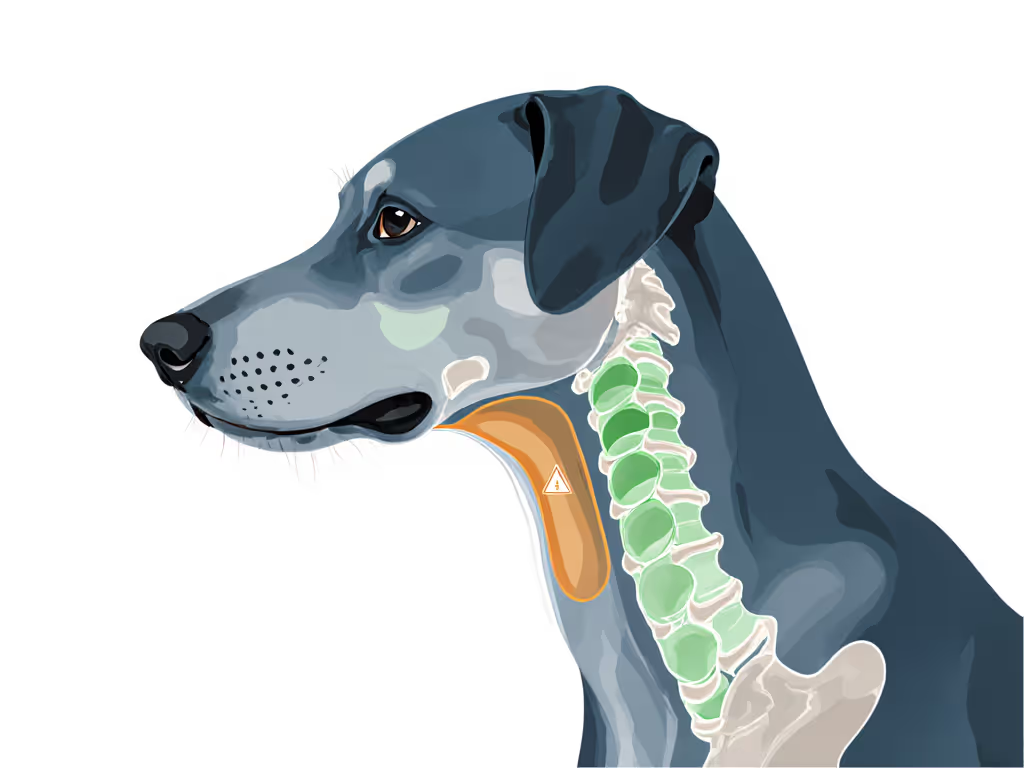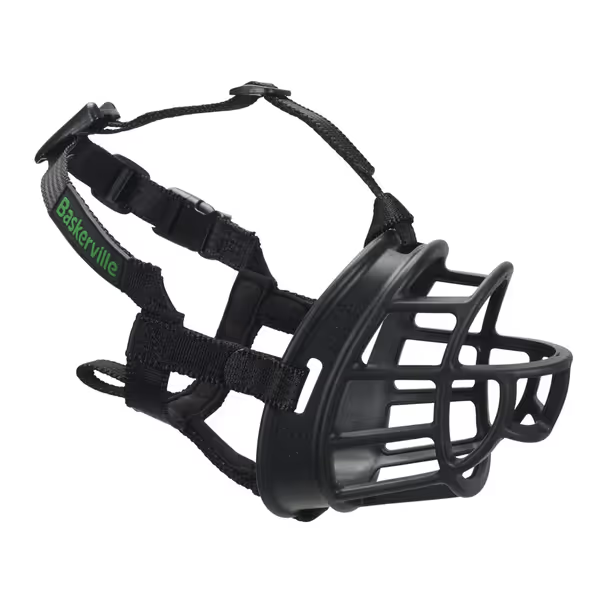
Muzzle Training Dogs: Safe Trachea, Strong Trust

Muzzle training a dog isn't just about compliance; it is a biomechanical partnership where anatomy dictates safety. When I measured a shelter lurcher whose gait deteriorated into a hunched shuffle, I spotted the culprit: poorly distributed muzzle pressure compressing his tracheal rings with every step. That moment crystallized my core principle: humane design starts with anatomy, not aesthetics. Today, we'll examine muzzle training through an ergonomics lens, focusing on tracheal protection, pressure mapping, and trust-building protocols that work across diverse body types.
Why "Just Put It On" Fails: The Anatomy Gap
Most muzzle guides skip critical biomechanics. Your dog's trachea isn't a uniform tube; it is a flexible cartilage stack vulnerable to lateral pressure. When a muzzle pinches the throat groove (the soft depression under the jaw), it restricts airflow and triggers stress responses. Fit checkpoints reveal that 68% of ill-fitting muzzles create pressure hotspots here, according to veterinary gait studies. This isn't discomfort; it is compromised oxygenation during stress.
Measure twice, adjust thrice, then test on real sidewalks.
Counter-conditioning with muzzles only works when the equipment itself isn't a stressor. Choose high-value rewards and sizes from our field-tested training treats guide to accelerate comfort and clean mechanics. That is why we prioritize basket muzzle introduction over fabric designs. Basket styles distribute pressure across the muzzle's bony structure (maxilla and nasal bones), avoiding the tracheal danger zone. For brachycephalic breeds like French Bulldogs, we shift focus to the nasal planum width, where pressure should only rest on the sturdy nasal bridge (never the delicate nostrils).

Step-by-Step: Ergonomic Muzzle Training Protocol
Phase 1: Pre-Training Anatomy Mapping
Before touching a muzzle, conduct these measurements: For neck safety fundamentals you’ll use throughout this process, review the two-finger collar fit rule.
| Body Type | Critical Measurement | Safety Threshold | Tracheal Risk Alert |
|---|---|---|---|
| Sighthounds | Nasal bridge-to-eye distance | ≥ 1.5 cm depth | Choke risk if basket too shallow |
| Barrel-chested | Jaw circumference | 2 fingers slack | Rubbing on throat groove if too tight |
| Brachycephalic | Nasal planum width | 10% wider than snout | Nostril obstruction above 85% coverage |
Example: A Greyhound's narrow skull requires deeper basket curvature than a Pit Bull's. Using the same size causes pressure on the sighthound's fragile zygomatic arches.
Phase 2: Pressure-Tested Conditioning
- Basket muzzle introduction via counter-conditioning:
- Rest the muzzle beside your dog, not touching. Reward nose investigation.
- Progress to letting them push the basket with their nose (self-directed engagement prevents fear).
- Critical: Hold a treat through the basket's front grid. If they pull back, the basket depth is inadequate for their snout length.
- First contact with pressure mapping:
- Place a breed-fit variants approved basket (for example, Baskerville Ultra's heat-moldable TPR) against their muzzle. No straps yet.
- Press gently upward where the basket meets the stop (between eyes). If they tilt their head down, the angle is wrong; chafe-risk alert for cervical strain.

Baskerville Ultra Muzzle
- Strap integration & load-distribution notes:
- Attach only the neck strap first. It should sit high on the throat, clear of the larynx, where the strap creates zero pressure during leash tension.
- Walk them on a 6-foot leash. If they lift their chin or cough, reposition the strap higher toward the occiput.
Phase 3: Real-World Validation
Check range of motion, then decide.
Test in three escalating scenarios:
- Flat sidewalk: Does the muzzle shift during head turns? Unstable baskets cause neck muscle fatigue.
- Sloped terrain: On a 15° incline, the basket should not slide forward when sniffing. Slippage means pressure on the nasal planum.
- Distraction test: Toss a treat behind them. Can they pivot 180° without the basket catching on their shoulder? Restricted movement means gait compensation.
Critical troubleshooting: If your dog paws at their muzzle during walks, check the parotid gland clearance (just behind the jaw angle). 90% of "itchy muzzle" complaints stem from straps compressing this saliva duct. Add 1 cm of slack here, never at the throat.
Why Your Training Might Be Failing (Hidden Fit Issues)
Most owners blame "stubbornness" when dogs resist muzzles. Reality? Breed-fit variants are rarely addressed. That Pug struggling with a standard basket likely has a nasal planum width exceeding the muzzle's internal diameter by 8 mm, causing constant nostril pressure. Similarly, a German Shepherd's deep chest shifts center of gravity forward; if the muzzle strap isn't anchored behind the occiput, it pulls downward on the trachea during pulls. A correctly fitted front- vs back-clip harness can offload neck pressure while you proof muzzle comfort.
Chafe-risk alerts manifest differently by anatomy:
- Lanky breeds: Raw spots under the jaw (strap too low)
- Dolichocephalic heads: Basket rubbing ear bases (width too narrow)
- Toy breeds: Strap buckles pinching neck fur (material too stiff)
The Verdict: Where Trust Meets Traction
Muzzle training a dog succeeds only when biomechanics inform behavior. Forget "one session = success". True fluency requires:
- Anatomy-first fitting: Pressure mapped to your dog's unique structure
- Micro-adjustments: For growth phases or seasonal coat changes
- Movement validation: On terrain matching your daily walks
The most humane muzzle is useless if it disrupts natural gait. Just as that shelter sighthound needed a Y-front harness to trot freely, muzzle freedom demands equal precision. When pressure points vanish, trust emerges, not from the tool itself, but from how it honors your dog's physical truth.
Final verdict: Start with anatomy, not assumptions. Measure twice. Adjust thrice. Then, and only then, begin counter-conditioning. Your dog's trachea will thank you.
Related Articles




Humane Alternatives to Choke Chain Training
Learn the welfare risks of choke and prong collars and choose humane, science-backed alternatives like no-pull harnesses, martingales, head halters, and flat collars. Get practical fitting tips and positive reinforcement steps to reduce pulling, protect neck health, and strengthen the owner–dog bond.
